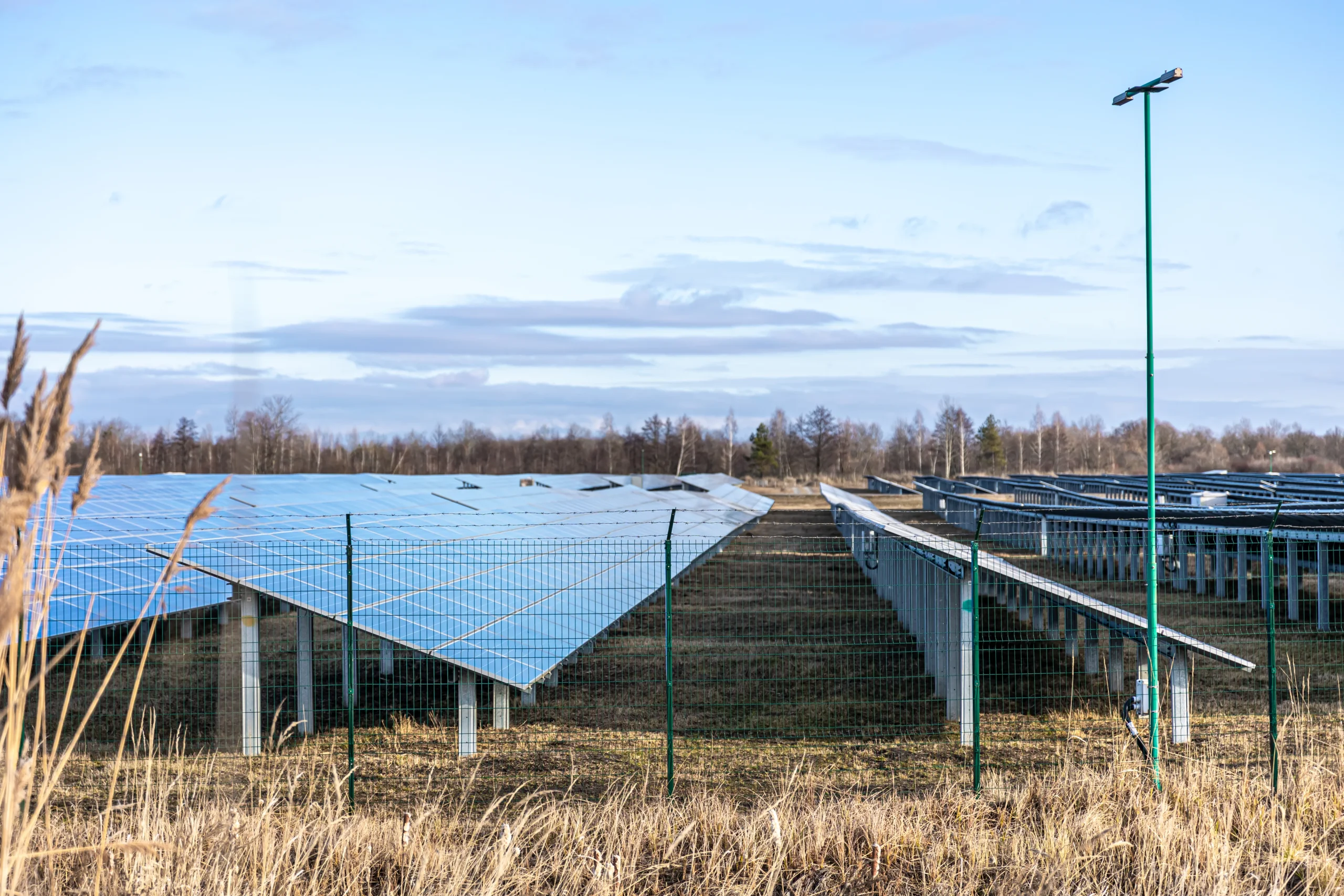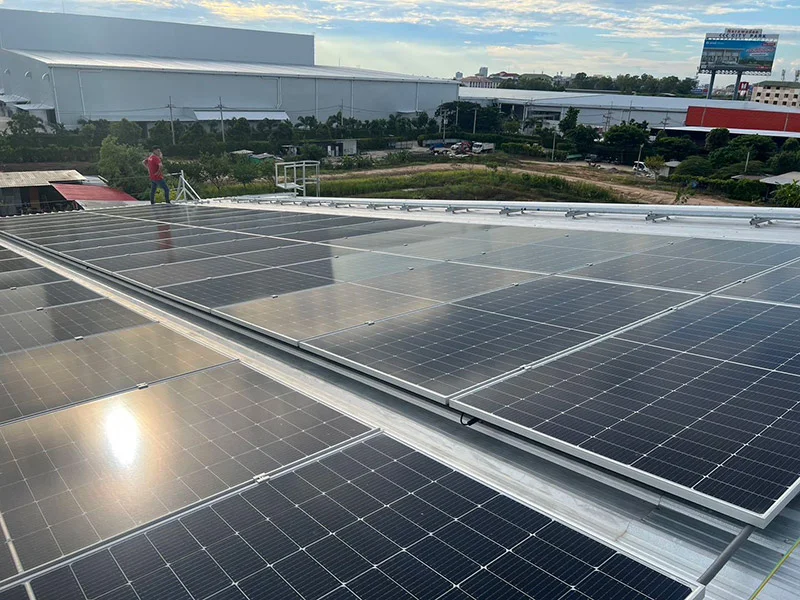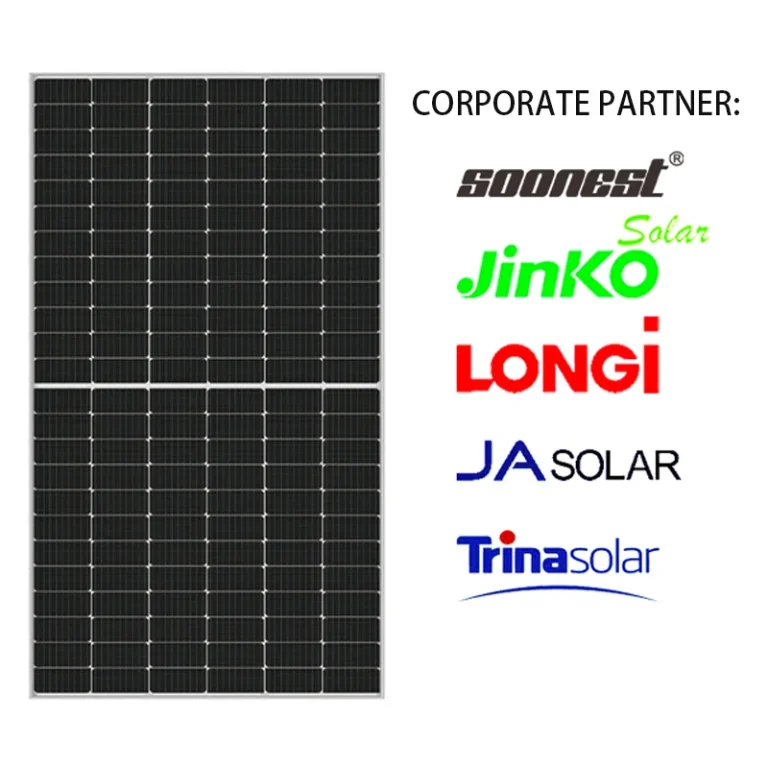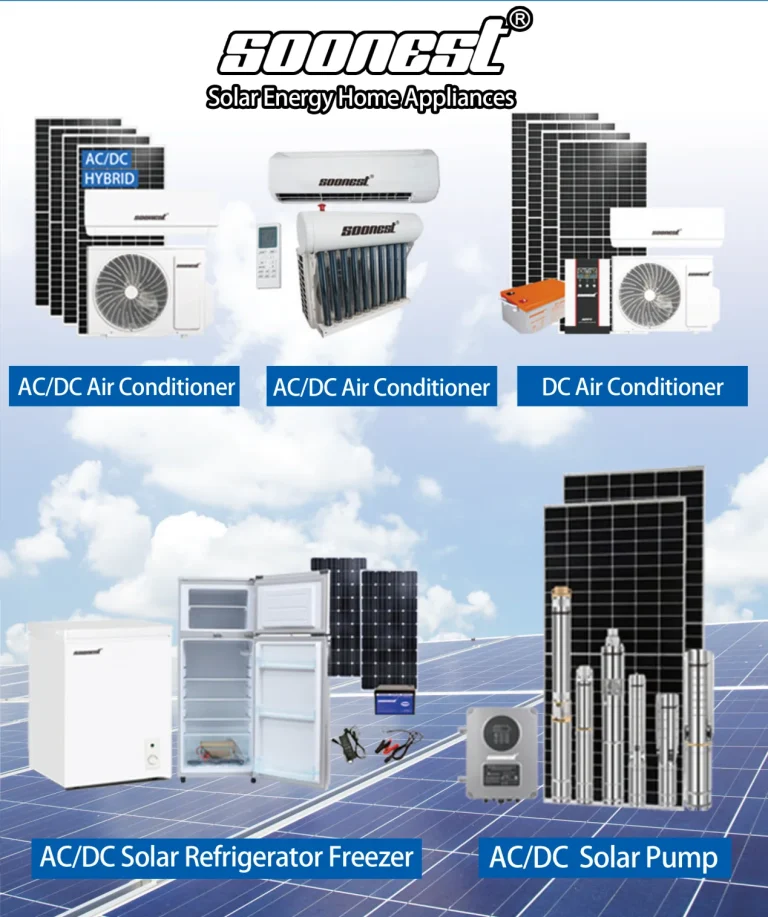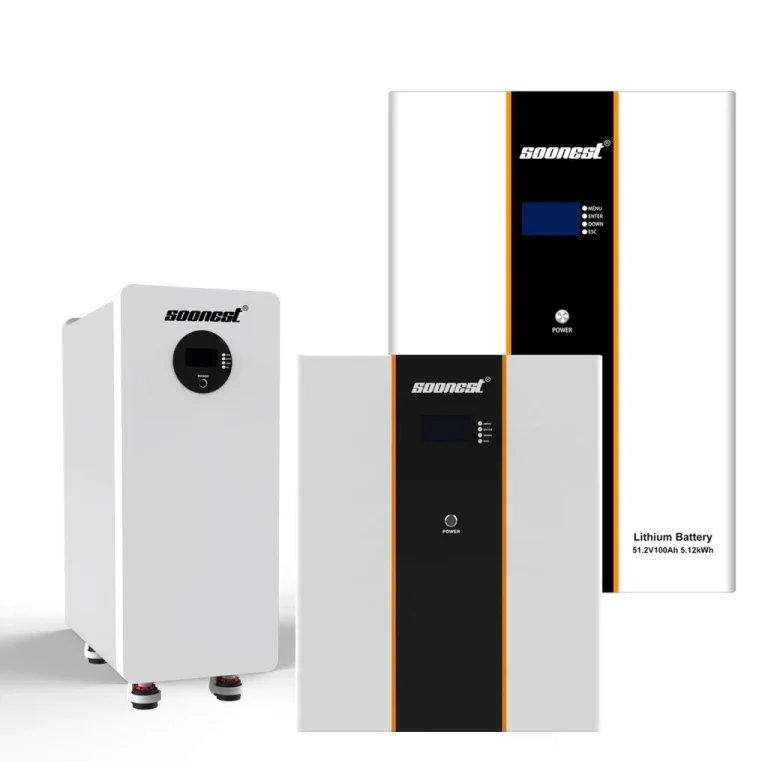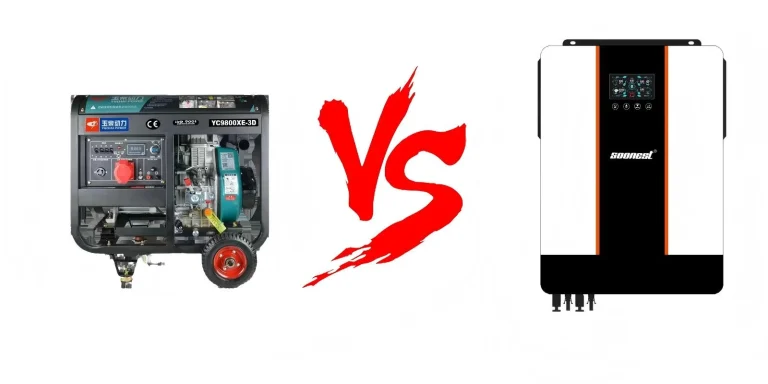This guide tells you how black (monocrystalline) and blue (polycrystalline) solar panels are different. It looks at how they’re made, how much power they give, how they look, and how they work with lithium batteries for solar panels. Black panels make more energy, look cool, and fit well in tiny spaces. Blue panels are cheaper but give less power. Your pick depends on your money, space, and energy needs. Soonest lithium batteries for solar panels team up nicely with strong black panels. They charge fast and last a long time. We’ll also talk about costs, being kind to the planet, and how to set up a system to help homes and businesses choose what’s best.
What Makes a Solar Panel’s Color?
A solar panel’s color isn’t just for show. It comes from science and how the panel is built. Blue panels use polycrystalline silicon. This stuff has a messy crystal setup that scatters light. That’s what gives them a shiny blue look.
Black panels are usually monocrystalline. They come from one big crystal that grabs more light and reflects less. That’s why they look dark and neat. Special coatings added when making them also change how they look.
How Are Black and Blue Panels Made Differently?
How panels are made is a big difference. Monocrystalline (black) panels start with one solid silicon crystal. It’s grown using a process called Czochralski. This takes lots of energy but makes clean, high-quality panels.
Blue polycrystalline panels are easier to make. Workers melt silicon and pour it into molds. It is cool in square shapes. This costs less but makes panels with less power because the crystals are jumbled.
Why Does the Material Matter: Monocrystalline vs Polycrystalline?
The material changes how well panels work and how long they last. Monocrystalline cells look tidy and give more power in small spaces. Polycrystalline panels cost less but need more room to make the same energy.
If your roof is tiny or you want a sharp look, black monocrystalline panels are a super choice. But if you’re saving money, blue polycrystalline panels still do a good job.
Do Black and Blue Panels Perform Differently?
Yes, and these differences matter based on what you want from your solar setup.
How Do Efficiency and Power Output Compare?
Monocrystalline panels are better at turning sunlight into electricity. They hit 18% to 22.8% efficiency. Big brands like Maxeon reached 22.8% in 2024. Polycrystalline panels get 15% to 17.5%, with Trina Solar hitting 17.5% in 2023. For a 1.6 m² panel, black ones make 370–450 watts. Blue ones make 300–350 watts. This makes black panels awesome for small spaces. Source: Renewable Power Generation Costs in 2023 (IRENA, September 23, 2024).
What About Handling Heat?
The temperature coefficient shows how much power a panel loses when it’s hot. Monocrystalline panels do better in heat. A 2023 study by the National Renewable Energy Laboratory (NREL) found they keep 5–10% more power than polycrystalline panels above 25°C. Source: NREL (2023). So, if you’re in a warm place, black panels can help you save energy.
How Long Do These Panels Last?
Both types last 25 years or more. But monocrystalline panels often get longer warranties. Their pure silicon makes them more dependable over time.
Why Do Looks and Setup Flexibility Matter?
For many homes and businesses, how panels look is just as important as how they work.
Which Panel Looks Nicer for Homes or Businesses?
Black monocrystalline panels have a clean, dark style. They blend well with modern roofs, like dark shingles or metal ones. Blue polycrystalline panels can look patchy because of their mixed crystals. They might stand out more on some roofs.
Does Limited Space Change Your Panel Choice?
For sure. If your roof is small or has weird shapes, high-power black panels give you more energy without needing more space.
Do These Panels Fit Modern Roof Designs?
Both types work on most roofs with normal mounting gear. But black monocrystalline panels look smoother on modern homes or buildings. Their tidy shape and solid color help with this.
Does Panel Type Affect Charging Lithium Batteries?
Yes, it matters a lot when using lithium batteries for solar panels.
Why Does Voltage Matching Matter?
Panels need to send the right voltage to charge lithium batteries for solar panels well. Black monocrystalline panels give steady voltage. This matches what lithium batteries need. It makes charging easy and smooth.
Lithium batteries for solar panels are special batteries that recharge. They store solar energy using lithium-ion tech. Lithium ions move between two parts to save and use power.
How can charging Speed and Depth of Discharge be Made Better?
Lithium batteries for solar panels charge quickly than old lead-acid batteries. The steady power from black panels lets them charge fast without hurting the battery’s control system (BMS). Also, lithium batteries can use almost all their energy without wearing out quickly. This is perfect for getting lots of power daily.
How Should You Set Up Your System for Best Storage?
To make your setup shine, use high-power panels with the right-sized lithium batteries for solar panels. Pick batteries with smart BMS features, like temperature control and overcharge protection. Good sizing reduces energy waste. It also helps panels and batteries last longer.
What Makes Soonest Lithium Batteries Special?
If you want great storage for your solar system, Soonest lithium batteries for solar panels have cool features for homes and businesses. They offer:
- Long cycle life
- Built-in Battery Management System (BMS)
- Fast charging
- Safety certifications that meet world standards
Soonest batteries last longer. You can charge and use them way more times than lead-acid batteries.
Whether you’re powering your home on cloudy days or running off-grid business tasks, Soonest keeps energy steady. It also cuts down on fossil fuel use.
Which Panels Work Best With Soonest Batteries?
Both panel types work with Soonest lithium batteries for solar panels. But black monocrystalline panels are better. Their steady voltage and high power fit the batteries’ needs. This makes daily charging and discharging easier.
What Are the Costs of These Options?
Cost matters a lot when choosing solar parts, from panels to Soonest lithium batteries for solar panels.
Is There a Cost Difference Between Black and Blue Panels?
Yes, black monocrystalline panels cost more. They’re tougher to make and give more power. But their extra energy per square foot can save money over time.
How Much Do Lithium Batteries Add to Your Budget?
Lithium batteries for solar panels, like Soonest models, cost more than lead-acid batteries at first. But they store more energy in less space. This gives great value for each watt-hour, especially with strong black panels.
Can You Save Money Long-Term?
Lithium batteries for solar panels are efficient. They store more of your panels’ energy for you to use. This lowers your need for grid power. That means smaller bills year after year.
How Does This Affect the Planet Over Time?
Picking green parts helps your budget and the Earth.
How Fast Do Panels Pay Back Their Energy Use?
Monocrystalline panels pay back their energy use quicker. They make electricity better, even if they take more energy to make.
What Emissions Come From Using Panels With Lithium Batteries?
Using lithium batteries for solar panels lets you store clean energy. This cuts emissions by using less dirty grid power during busy times or outages.
Can These Parts Be Recycled?
Both silicon panels and lithium batteries for solar panels (like lithium iron phosphate) can be recycled as tech gets better. This makes solar systems greener for homes and businesses.
Which Setup Should You Pick Based on Your Needs?
Your choice depends on balancing looks, power needs, budget, and plans.
For Homes: Should You Focus on Looks or Power—or Both?
If you want style and strong performance, black monocrystalline panels with small, Soonest lithium batteries for solar panels are a great combo. They’re perfect for tiny roofs with big energy needs at night or during outages.
For Businesses: Is It Worth Getting High-Power Systems With Storage?
Absolutely. Businesses benefit from strong setups with black panels and solid storage like Soonest lithium batteries for solar panels. These lower costs during peak times keep things running, even if the grid fails.
FAQ
Q1: Can I mix black and blue solar panels in one system?
A: Yes, but it’s not ideal. They need similar electrical traits, like voltage, to work well. Mixing them can lower your system’s power.
Q2: Do lithium batteries work in winter?
A: Yes. With good insulation and BMS controls, lithium batteries for solar panels work safely in cold weather. They’re reliable all year.
Q3: Are premium black panels worth it if I use net metering?
A: If looks or small roof space matter, black panels are worth it. They’re also great if you add Soonest lithium batteries for solar panels later. They give benefits beyond net metering savings.

